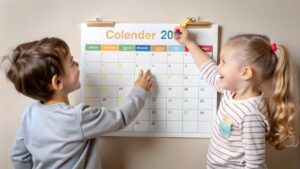The Education Blog

How to Evaluate Homeschool Progress Without Standardised Tests
You don’t need a multiple-choice scantron to know your child is learning. In fact, one of the biggest perks of homeschooling is the freedom to assess progress in ways that feel meaningful, not mechanical. Whether you’re wary of standardised testing or your state doesn’t require it, there are smarter ways to track growth.
This guide breaks down homeschool assessments that go beyond tests. From portfolios to project work, we’ll help you recognise real understanding, without draining joy from your homeschool routine.
Ready to assess progress in a way that actually reflects what your child knows — and loves? Let’s begin.
Understanding the Core: Why Non-Testing Assessment Works
Traditional tests measure what’s easy to score — not always what’s most important. In homeschooling, you’re often aiming for deep learning, creativity, and critical thinking. And these don’t always fit in a multiple-choice format.
Benefits of Non-Testing Evaluation:
- Custom feedback over impersonal scoring
- Real-world application instead of memorisation
- Ongoing growth measured at the child’s pace
- Focus on strengths, not test performance anxiety
Tracking progress without tests gives you a holistic view of your child’s learning journey.
Quick Guide: Evaluation Without Exams
- Use a portfolio system with samples of work
- Write narrative reports for key subjects
- Conduct self-assessments with your child
- Track skill milestones, not just content mastery
- Incorporate practical, real-life projects
Step-by-Step Guide: Tracking Learning Progress
1. Create a Learning

Collect weekly samples — writing assignments, drawings, photos of science experiments, video clips, or reading logs. Organise them by subject or week.
Why it works: You see growth over time, and it’s perfect for parent-teacher reviews or yearly check-ins.
2. Use Rubrics or Checklists
Design rubrics for major assignments. Instead of a score, assess skills like “clarity of ideas,” “use of evidence,” or “follow-through.”
Pro Tip: Keep rubrics simple and use them consistently. Share them with your child so expectations are clear.
3. Write Narrative Assessments
Once a month or term, write a paragraph or two for each subject. Include what your child has learned, their progress, challenges, and next goals.
Bonus: These also help when planning the next unit or reporting to local education authorities.
4. Conduct Learning Conferences
Set aside time for a 1:1 with your child. Ask what they’re proud of, what felt hard, and what they’d like to do next.
Important Tip: Listen more than you talk. Self-reflection builds motivation and insight.
5. Use Real-World Projects
Let kids build something, write a story, plan a trip, or teach someone else. These activities naturally demonstrate understanding.
Example: After a history unit, your child might design a timeline, roleplay a historical figure, or create a documentary.
Warnings & Creative Considerations
Important: Be consistent. A little tracking weekly beats a rushed catch-up at year-end.
Warning: Don’t use too many methods at once. Choose 2–3 evaluation tools that fit your child’s style.
Creative Tip: Let your child design their own evaluation project for a unit — it boosts ownership.
Best Practices & Educational Insights

Mix Quantitative and Qualitative
Use charts to track maths facts or reading level, but write reflections too. Data + narrative = powerful progress tracking.
Track Skills, Not Just Subjects
Note life skills like time management, emotional regulation, and collaboration.
Involve the Child
Ask your learner what they think they’ve improved on and where they need help. Their input is golden.
If you’re teaching kids at different levels, you might find it helpful to read how to homeschool kids at different grade levels for tips on individualising assessment.
FAQs

How do I know if my child is progressing without tests?
Watch for improvements in comprehension, communication, and confidence. Review old work to see growth.
Do I need to report non-standardised evaluations to my state?
Check local laws. Some states accept portfolios or narrative reports as part of annual review requirements.
What if my child resists evaluation?
Use informal methods — let them present a project or share in a casual conversation. Keep it low-pressure.
Can I switch from tests to portfolio mid-year?
Yes! Just start collecting samples and transition gradually. Add brief notes to reflect progress.
How often should I evaluate?
Monthly or termly check-ins are effective. Weekly notes can help you spot trends and tailor lessons.
Progress, Without Pressure — The Homeschool Way
Evaluation doesn’t have to mean stress. In fact, non-testing evaluation can be one of the most affirming parts of your homeschool experience. It’s where you pause, look back, and celebrate.
By focusing on growth instead of grades, and curiosity instead of comparison, you can track learning in a way that supports — not stifles — your child.
So step away from the testing mindset. Embrace storytelling, samples, and small wins. Your child’s progress is happening. This time, you’ll see it — not just score it.
Looking for rhythm without burnout? You’ll find guidance in best time management tips for working homeschool moms to keep evaluations sustainable.









